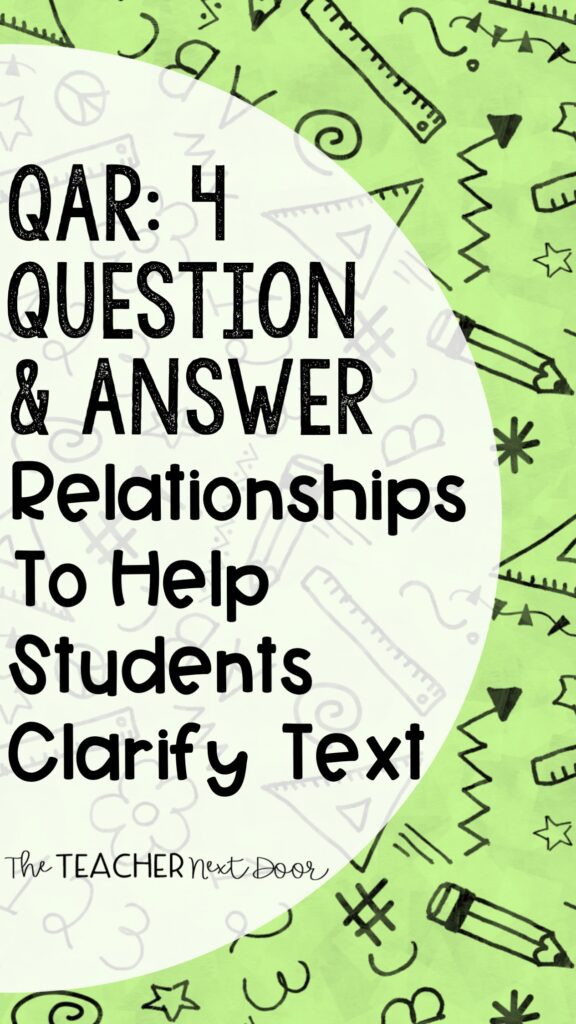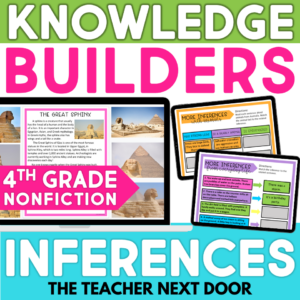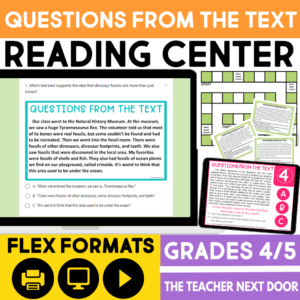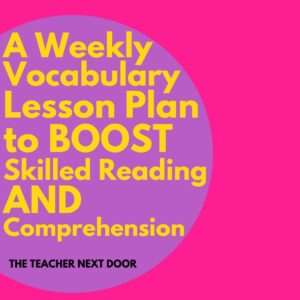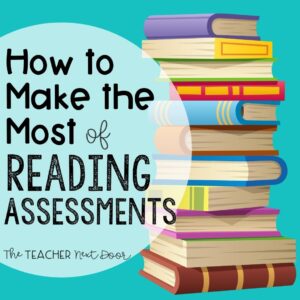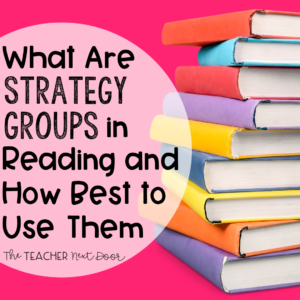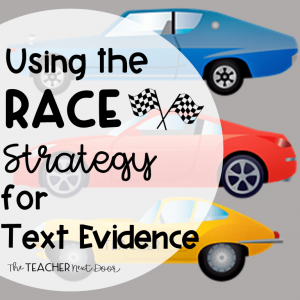QAR: 4 Question and Answer Relationships to Help Students Clarify Text
Teachers like to keep things fresh! We want to hold our students’ attention and stay up to date with the latest in teaching best practices. Add to this all of the places to find new lesson ideas online. It’s easy to get lost in the search for THE NEXT BEST THING.
Once in a while, it’s nice to remember that we don’t have to keep reinventing the wheel. There are some classic teaching strategies out there that have really stood the test of time, and with good reason!
Let’s take a closer look at one of these strategies, Question and Answer Relationships. This was first developed in the 1980s, and has been used and adapted by sooooo many teachers since then!
History of QAR
Question and Answer Relationships (QAR for short) was first developed by T.E. Raphael, in the 1980s. It was featured in the book The Reading Teacher, and teachers all over the US have been using QAR ever since!
If you are like me, 1985 doesn’t seem like it was THAT long ago, but the truth is it’s been a while! I was not able to find a lot of information about this book, but I did find that it has been referenced many times as the original source of QAR.
What Is QAR, Exactly?
Now that you know where it came from and its cute nickname, you might still be wondering what exactly is QAR?
Simply put, it is a way of thinking about the relationships between a text and questions about that text. It provides a handy breakdown of the different types of questions that can be asked about a text. It also adds a framework for the types of answers for each question type.
The key to this strategy is getting students to understand and be able to name the different types of relationships that exist between what the student already knows, what the text says, and what the question is asking.
Question Types
QAR names four different types of questions.
- Right There – answers can be found stated directly in the text
- Think and Search – information is put together from different parts of the text to answer these
- Author and You– these are answered with a combination of what the text says and the reader’s own experience and background knowledge, AKA inferencing
- On My Own– answers are based on the reader’s own knowledge and experience
When students understand which type of question is being asked, they have a clear starting point on how to craft a solid answer.
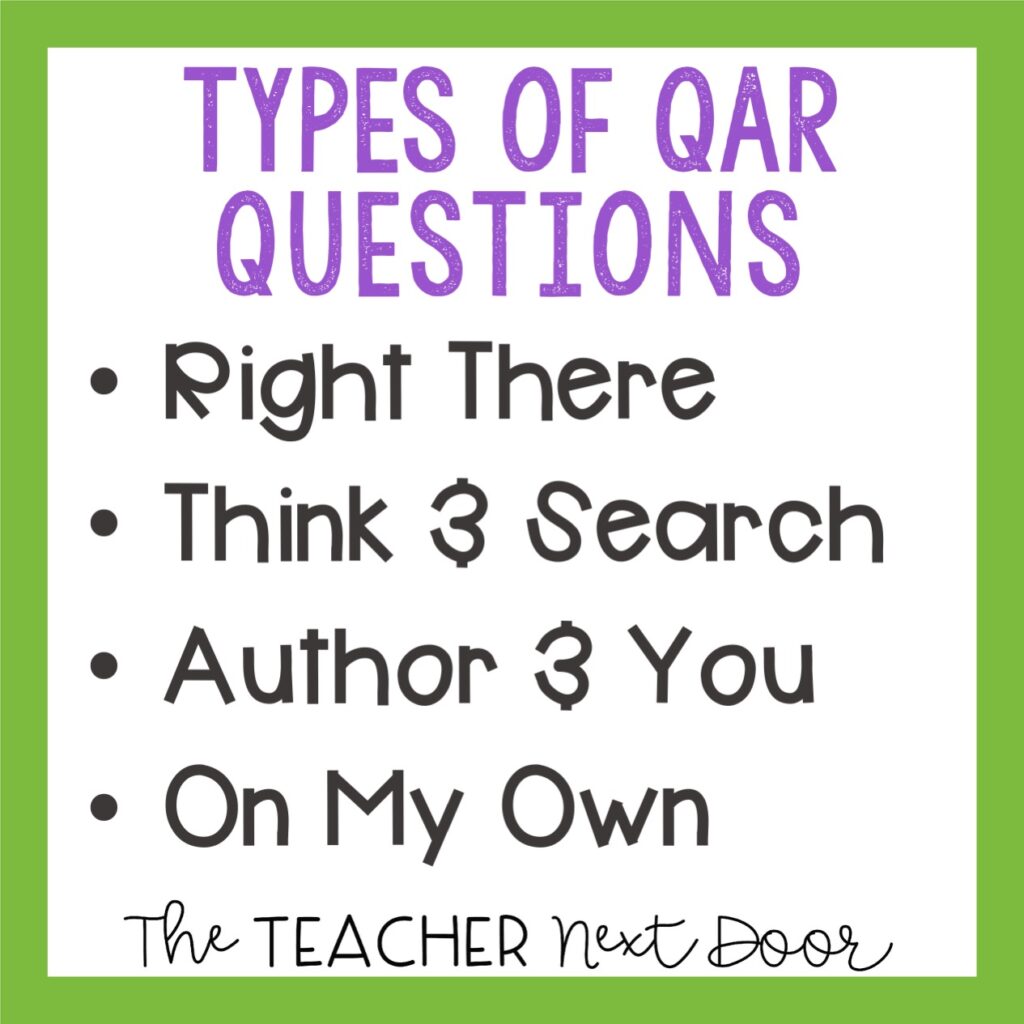
Withstanding the Test of Time
So why has QAR had such amazing staying power in the educational world? Simple- it gets the job done! Teachers haven’t needed to improve on it because it applies to any text or question.
Another cool thing about QAR is that it is commonly used in the upper grades, by middle, and even high school teachers. This means that you are laying a foundation for something that students will be able to use for YEARS to come. That’s what we call a teacher WIN!
Now you know what QAR is and how you can use it. The next step is practicing this with your own students. Look no further!
This Making Inferences Digital Reading Unit for Google Slides provides lots of practice with making inferences, aka “Author and You” questions. This is undoubtedly the most difficult type of question for kids. The high-interest passages in this unit will keep kids’ attention and help them strengthen this skill.
Need practice for those “Right There” skills, too? Check out Questions from the Text Center Print and Digital 4th and 5th Grades. It’s a super engaging way to help students practice finding “right there” information and also includes practice with making inferences.
Check out these related blogs!
3 Powerful Strategies to Teach Asking & Answering Questions
Important Steps to Teach Paired Passages
How to Deal with Context Clues

Standards Alignment – RI.4.1 – Refer to details and examples in a text when explaining what the text says explicitly and when drawing inferences from the text.

